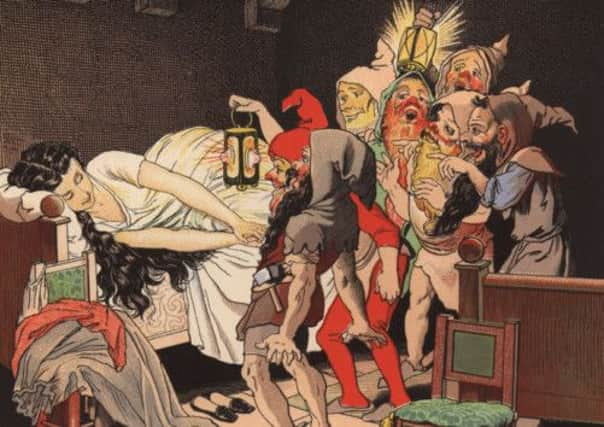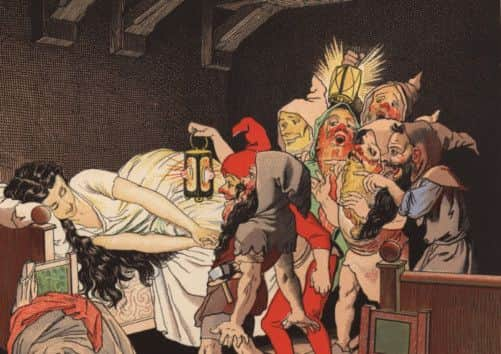Lori Anderson: Grimm truth offers a happy ending


They conjured up flaxen-haired princesses, cold-blooded step-mothers and rustic homesteads made of gingerbread lintels and chocolate eaves. Together they gathered up strange and sometimes gruesome tales from the four corners of their country and had them bound together in an extraordinary book.
Today Germany is now almost half way through a year long celebration of the 200th anniversary of the publication of the Brothers Grimm’s first collection of stories, Kinder-und-Hausmarchen (Children and Household Tales). In an example of Teutonic efficiency the nation settled on 2013 for the celebration, even though the book itself was actually published on 20 December, 1812, as this allowed them to focus on the more lucrative summer tourist market rather than the smaller festive market, a decision which has proven to be of greater benefit to the towns of Bremen and Hamelin – whose Pied Piper is known to children throughout the world.
Advertisement
Hide AdAdvertisement
Hide AdFor the past six months there have been national debates and celebrations centred around the celebrated works of Jacob and Wilhelm Grimm such as Cinderella, Hansel and Gretel and Snow White. Yet, just like taking a bite from a poisoned apple, the Grimm’s fairy tales include a darkness that has proved controversial ever since the first copy was heaved from a book shelf.


As students of medieval German literature, Jacob and Wilhelm Grimm came to view folk stories as the purest form of culture, and fearful that the oral tradition might be lost as the industrial revolution picked up pace, they set about collecting as many as they could. Their methodology was simple, anyone with a tale – pub patrons, friends, family and villagers were invited round to their house and as the person spoke the brothers scribbled the tale down and later shaped it for publication. Today their stories are considered to be for children, but the first edition was for adults and it was not until 1819 that children became the target readership and – even then the authors added a warning that some stories may be unsuitable for younger readers.
In the early versions of Snow White the evil stepmother dances herself to death in red hot shoes, in other stories witches are burned, a servant tumbles into a barrel of nails and rolls to his death, in The Girl Without Hands, the devil tricks a miller into chopping off his daughter’s hands, but don’t worry, a kindly king makes her a silver pair. Perhaps the most gruesome of all was How The Children Played Butcher in which a childish game results in a violent murder.
Yet what began as a literary survey of folk tales, collective fears of the dark forests of mittel Europe and superstitions, would evolve over the next 35 years into a collection of some 200 stories many of them moulded to include morals and illustrate rewards for good behaviour. There are those who say fairy tales are for children, but to the Jungian therapist these stories contain archetypes expressing the collective unconscious. Dreams and fairytales expressing patterns which can act as roadmaps to our deepest fears and desires,. However, it was what the stories said about the German people that would become so interesting.
After the Second World War the Brothers Grimm were hauled into the dock and accused of contributing to the pollution of the German soul. The brothers’ love of “blood and soil” and desire for a unified Germany was scrutinised under a long lens by the Allied authorities who now occupied the nation. Where the Nazi Party advocated that every home in Germany should have a copy of their collected tales, the British, American and French insisted that the book be banned. TJ Leonard, a British major argued that the stories educated children in “all the varieties of barbarousness” and so helped them play “the role of the hangman”. Later, Louis Snyder in his book on the roots of German nationalism, argued that the Grimm tales had helped to shape the national character with their advocation of obedience and the glorification of violence and authoritarianism.
Curiously, the Soviet Union, another authoritarian state, had no problem with the tales, refused to ban them in the east and instead saw them as celebrating the culture of the proletariat.
The anti-semitism found in certain stories would not have troubled the Russians who, despite fighting to the gates of the concentration camps, were already tilting towards their own pogroms under Stalin. The Nazi Party had approved of stories such as The Good Bargain in which a Jewish money-lender is tricked out of his coat and which had lines such as: “What a Jew says is always a lie. No true word ever comes out his mouth. That person is even capable of claiming I have his coat on.” Then there was The Jews Among Thorns where a servant finds a magic fiddle and makes a Jewish man compulsively dance through a thorn bush: “[Jews] have fleeced people often enough and now the thorns shall do the same to you.”
It was stories such as these and the more barbarous tales that prompted Gunther Birkenfeld to write that the tales showed “how the German people were able to perpetrate the atrocities of Belsen and Auschwitz.” Given the cataclysm the German state had brought upon the world and the Jewish people, it is understandable that the western allies should wish to figure out all the contributing factors, but it is still surprising that the book remained banned for so many years.
Advertisement
Hide AdAdvertisement
Hide AdThe rehabilitation of the Brothers Grimm in the 1970s came from an unusual quarter. Bruno Bettleheim, the author of one of the most piercing studies on the long-term effects of fear for concentration camp survivors, The Informed Heart, wrote an eloquent defence of dark fairy tales in 1976 when he published his book, The Uses of Enchantment, which used Freudian psychology to argue that the brothers’ twisted tales of death and abandonment actually allowed children to tackle their own fears.
In the 200th anniversary the Brothers Grimm have found millions of new readers in the most populous nation on earth for in recent years the book has become increasingly popular in China, a nation which in the past few generations has known the same starvation and cannibalism of the Thirty Years War, which inspired stories such as Hansel and Gretel. Hollywood has also rediscovered the stories that enchanted Walt Disney and has given them a modern, more mature twist in recent films such as Snow White and the Huntsman (2011) and Red Riding Hood (2011).
Personally, I’ve always loved the Brothers Grimm, ever since my first illustrated volume peaked out of my Christmas stocking, and even as a young child I preferred their darker gothic tales to the lighter fare of Hans Christian Andersen.
The world, for all its beauty, is dark and dangerous and forests are filled with fear. For two centuries the Brothers Grimm’s stories have taught successive generations to beware of strangers and for this we might all live happily ever after.